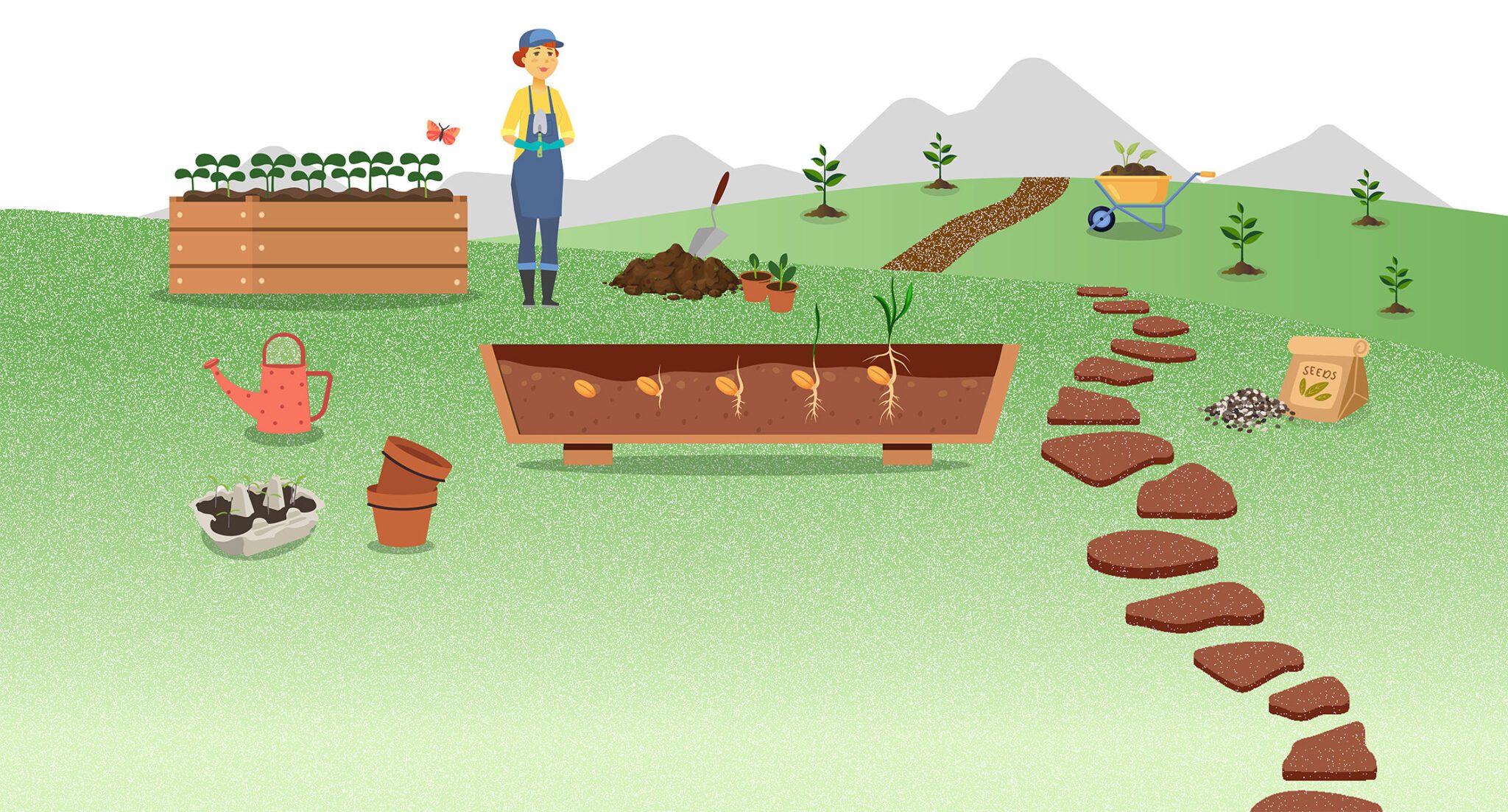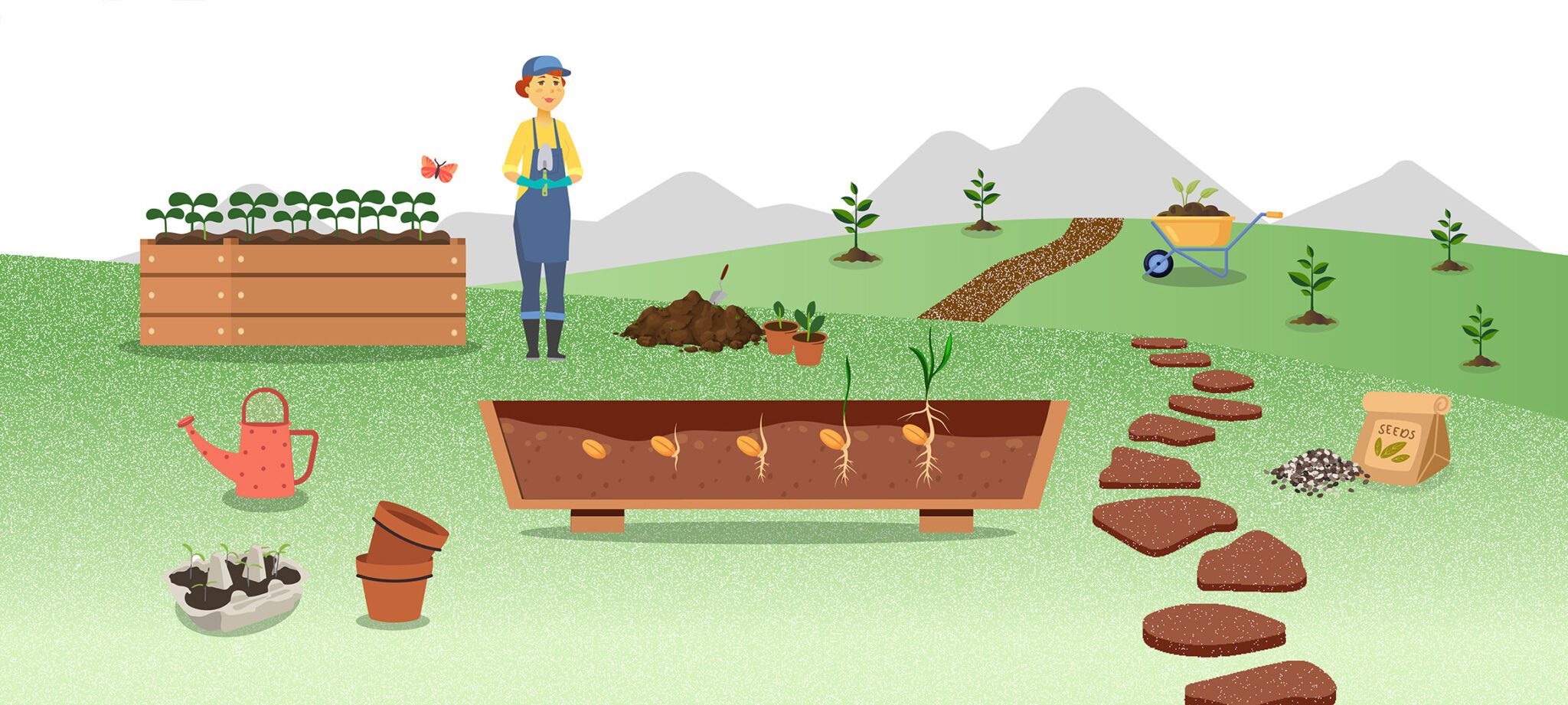

Curious
Planting the Seed
You’re drawn to the calm, clarity, and comfort that comes from tending plants or being in nature—and you’ve seen how powerful that connection can be in others. You’re curious about “therapeutic horticulture” and wondering if/how it belongs in your life. If so, this path is for you.
Have you ever felt a sense of peace while tending to a garden or houseplant, or while spending time in nature? You’re not alone. Research shows that spending time with plants and nature can ease stress, lift your mood, and create a deeper connection to yourself and the world around you.
At Root in Nature, we believe in the powerful health benefits that happen when you engage with plants and the natural world, even in small, everyday ways. Whether you’re exploring this path for personal well-being, creative fulfillment, or to bring more calm into your life, this is a perfect place to begin.




Understanding the Pathways: HT vs. TH
Before we dig into ideas and inspiration, it helps to understand the two main terms you might hear: Horticultural Therapy (HT) and Therapeutic Horticulture (TH).
We’ve created a short video to explain the difference in plain language, so you can decide what fits your interests and goals best. By watching the video, you’ll gain insights into how individuals from diverse backgrounds apply these practices in settings like community gardens, schools, healthcare facilities, and personal spaces.

Horticultural Therapy (HT)
is a clinical practice facilitated by a registered horticultural therapist. It involves structured, goal-oriented activities designed to achieve specific therapeutic outcomes within an established treatment or rehabilitation plan.
Therapeutic Horticulture (TH)
TH on the other hand, is a more community-based practice that can be facilitated by non-clinical professionals and volunteers that have received specialized training in TH. TH utilizes nature-based activities to support broader goals that address human health and wellbeing in a variety of settings, without the need for clinical oversight. However, many clinical professionals choose to combine their clinical education and specialized TH training to achieve high-quality, clinically significant treatment outcomes.
At Root in Nature, we offer education and support in therapeutic horticulture, not clinical horticultural therapy. That said, the GrowTH Network is designed to be a welcoming and valuable resource for both TH and HT practitioners, because regardless of title or setting, we share common ground in our values, goals, activities, and the importance of community.
If, after watching the video, you feel that HT is a better fit for your path, you can explore formalized training through organizations like the American and Canadian Horticultural Therapy Associations. At Root in Nature, we’re here to support you in whichever direction feels right for you.
If you’re curious about trying therapeutic horticulture for your own well-being, our Gardening for Wellness virtual series is a great place to start.


Gardening for Wellness
Our Gardening for Wellness virtual series was designed with beginners in mind. It’s a self-paced introduction to using plants and gardening as a form of personal self-care and mental wellness. You’ll learn how nurturing plants can help you:
- Reduce stress and anxiety
- Feel more present and mindful
- Boost your mood and energy
- Reconnect with nature and your own inner rhythm
This is not about perfection—it’s about planting seeds of well-being in your everyday life.

What you'll learn
Seed Starting
Grow your own food or flowers from scratch, no experience required.
Indoor Plant Care
Make your living space more peaceful with easy plant companions.
Simple Rituals
Incorporate calming gardening moments into your daily routine.
Sensory Practices
Connect with plants in creative ways that feel meaningful to you.


Nature at Work
Looking for practical ways to bring more calm, focus, and creativity into your workday?
Root in Nature’s self-paced Nature at Work course helps individuals and teams integrate natural elements – like plants, light, and design –into everyday spaces to support mental, emotional, and physical well-being.
Led by Dr. Owen Wiseman and Alexis Ashworth, with guest speaker Emma Terrell, this 1.5-hour course explores nature-based tools that reduce stress, enhance collaboration, and boost productivity, whether you’re leading a team or growing your own potential.
Learn how biophilic design and simple plant-based strategies can create healthier, more inspired workplaces. This course is a great fit for individuals looking to spark personal or professional transformation through nature-connected environments.

Work with a team who might benefit from training too?
Explore our Team Training Program to equip your staff or colleagues with the skills to lead therapeutic horticulture sessions.
Explore the Science Behind the Calm
If you’ve ever wondered why gardening feels so good, or wanted to explain it to a friend who doesn’t “get it”, you’ll love our Therapeutic Horticulture Research Database.
This isn’t just for scientists or professionals. It’s a growing collection of real-world studies, articles, and stories that explain how and why plants support our well-being, from reducing anxiety and improving focus, to easing burnout and enhancing quality of life.
You’ll Find:
- Easy-to-read summaries of scientific studies
- Articles on how nature supports emotional and physical health
- Stories of how gardening is used in schools, hospitals, communities, and at home
- Resources to help you share the benefits of therapeutic horticulture with others
Maybe you’re just beginning to notice how something as simple as tending a plant can shift your mood or mindset. If you’re curious about what’s happening beneath the surface—both in you and the soil—this is a great place to start exploring.



Stay Connected
Subscribe to our newsletter for the latest research, practical strategies, community features and events.
Follow us on Instagram, YouTube and Linkedin for resource giveaways, TH in action and seasonal inspiration.
Explore our blog for fresh insights, deeper dives on topics and real-life stories to inspire your TH practice.
Benefits for Clients
Benefits for Clients
Practitioners can benefit from using plants and nature in their therapeutic approach in several ways:
- Enhancing the environment: Plants and nature create a calming and relaxing environment that can promote wellness and enhance the overall atmosphere of a therapy session.
- Reducing stress: Exposure to plants and nature has been shown to reduce stress and anxiety levels, which is beneficial for individuals who are experiencing mental health conditions or chronic illnesses.
- Improving physical health: Spending time in nature and around plants can promote physical activity and exercise. Recreation therapists can incorporate therapeutic horticulture activities into their therapy sessions to promote physical health.
- Boosting mood: Being in nature and around plants can boost mood and help individuals feel more positive and optimistic. This can be especially helpful for individuals who are experiencing depression or other mood disorders.
- Promoting social connections: Group therapeutic horticulture sessions can provide opportunities for social interaction and connection, as well as promote bonding and create a sense of community.
Benefits for Practitioners
Benefits for Practitioners
Practitioners such as recreation therapists may benefit from taking therapeutic horticulture training for several reasons:
- Specialized knowledge: Root in Nature’s training program provides specialized knowledge and skills related to using plants, gardening, and nature as therapeutic tools. This can help recreation therapists better understand the therapeutic benefits of horticulture and how to effectively incorporate it into their therapy sessions.
- Professional development: Training in therapeutic horticulture can be a valuable form of professional development for practitioners. It can enhance their skills and knowledge, making them more effective in their role as a therapist.
- Expanded therapy options: With therapeutic horticulture training, recreation therapists can expand the range of therapy options they can offer their clients. Incorporating plants and nature into their sessions can provide clients with unique and effective therapeutic experiences.
- Improved client outcomes: Horticultural therapy has been shown to be effective in improving a range of outcomes for clients, including mental health, physical health, and overall quality of life. By taking Root in Nature’s training, recreation therapists can learn how to effectively use horticulture to improve their clients' outcomes.

